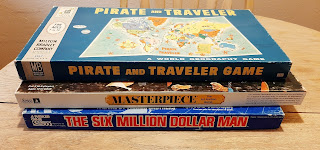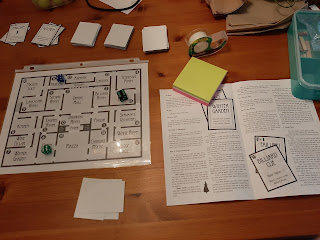Yut Nori

After reading about so many games from around the world and across history, one of my favorites for spare time is the game of Yut, which is a Korean traditional game whose origins are lost in the sands of time. Different researchers say it dates back to the 4th century AD, or the 12th, from one region or another, based on an earlier game, or not ... these are beyond the scope of my gamer's toolkit, and Wikipedia doesn't seem able to sort it out either. The game was introduced to Westerners by Stewart Culin in 1895 in his book on Korean Games, which can be found in full at Google books. There are some alternate names for the game, with Yut Nori appearing to be the most common, although it looks like yut nori means "yut game". Other names include Nyout and Korean Yoot , and even Korean Ludo. Cyningstan has a good page about it, and the Bead Game site has a page as well. I'm sure I could find many more. Even the meaning of the game seems to have been lost...















